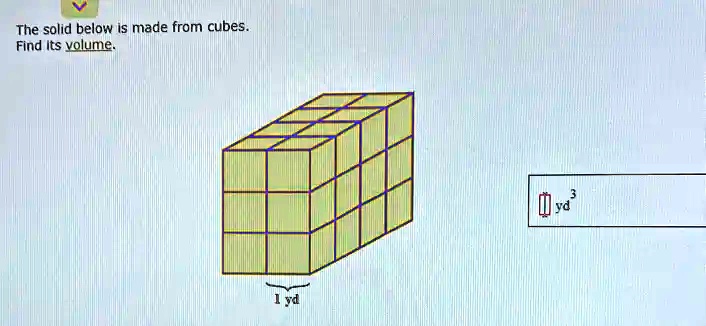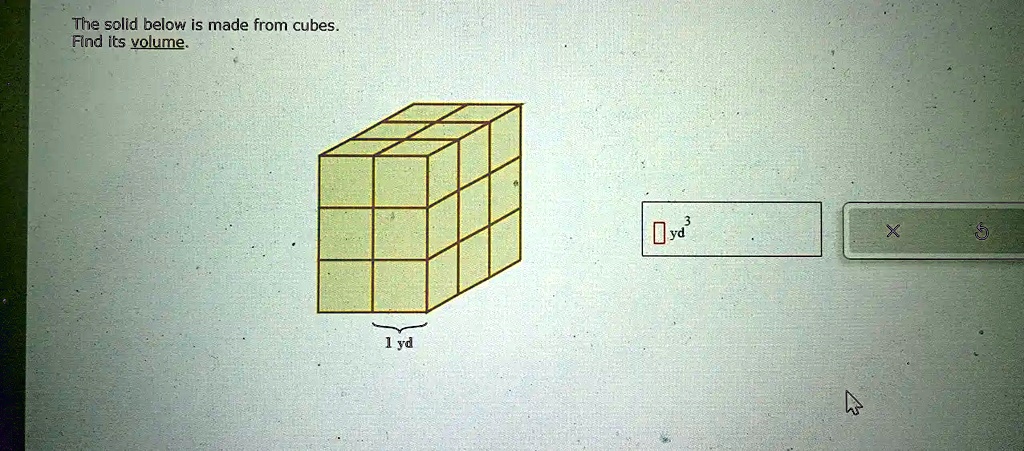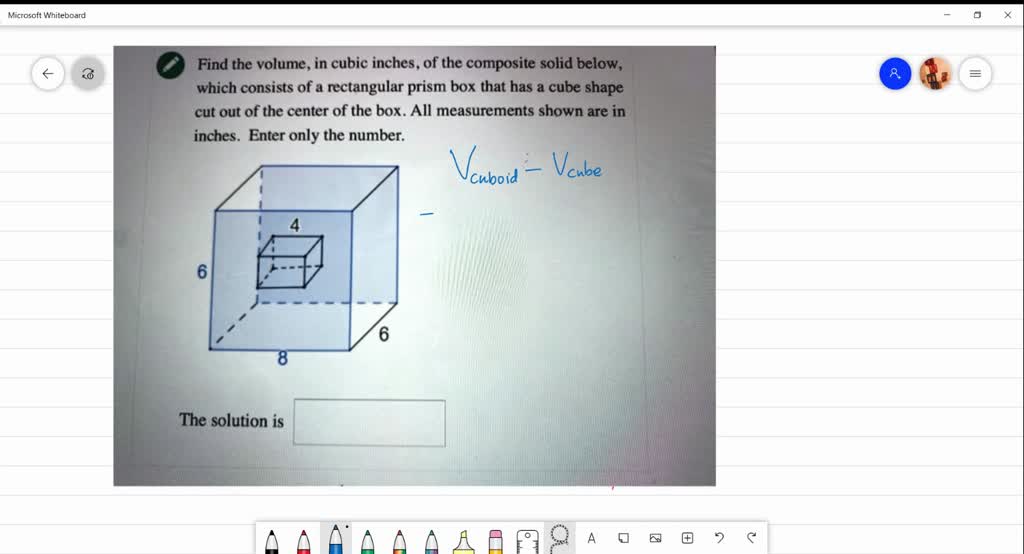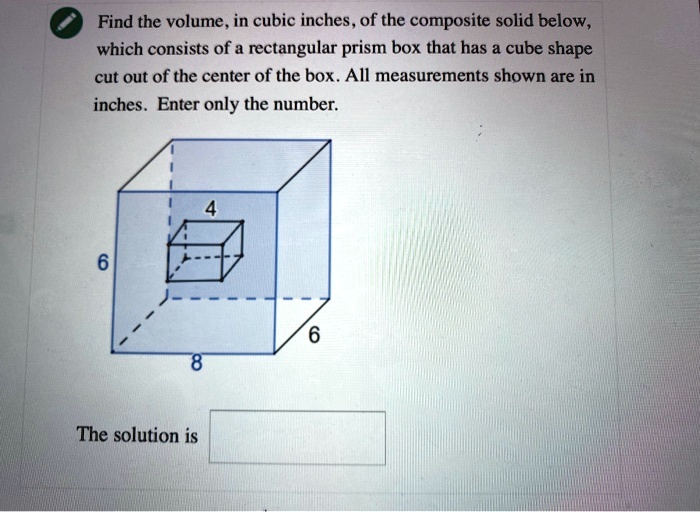The Solid Below Is Made From Cubes Find Its Volume

A seemingly simple geometry problem, "The Solid Below Is Made From Cubes Find Its Volume," is sparking heated debate and unexpected complexities within mathematics education. What appears to be a straightforward exercise in spatial reasoning is exposing deeper issues related to standardized testing, visual interpretation, and the potential for ambiguity in mathematical problems.
At its core, the problem presents a 3D figure constructed from interconnected cubes and asks students to determine its overall volume. The controversy arises not from the mathematical principles involved, but from the potential for multiple *valid* interpretations of the visual representation, leading to different, yet arguably correct, answers. This ambiguity has triggered widespread discussion among educators, mathematicians, and parents about the role of clarity and precision in mathematical instruction and assessment.
The Anatomy of the Problem
The typical problem setup involves a diagram depicting a solid shape formed by several cubes. Students are usually given the dimension of a single cube (e.g., a side length of 1 unit) and are then tasked with calculating the total volume of the solid. The challenge lies in accurately counting the number of cubes that make up the structure, considering those that might be hidden from view.
The primary source of contention stems from the lack of explicit information regarding the solid's construction. Is the shape a fully connected, homogenous structure? Or are there potential gaps or floating cubes not readily apparent in the 2D representation?
Multiple Interpretations, Multiple Answers
Dr. Anya Sharma, a professor of mathematics education at the University of California, Berkeley, explains the crux of the problem. "The visual representation, if not perfectly clear, can be interpreted in several ways. Different assumptions about hidden cubes or structural integrity can lead to varying, yet logically sound, volume calculations."
For instance, if a student assumes all cubes are fully connected and no gaps exist, they might arrive at one answer. Conversely, another student, noticing potential visual ambiguities, might deduce a different number of cubes, and thus a different volume. The problem lies not in the students’ mathematical abilities, but in their interpretation of an ambiguous stimulus.
Standardized Testing and the Ambiguity Dilemma
This particular problem has gained notoriety, in part, due to its appearance on standardized tests and in classroom assessments. The concern is that if the problem is inherently ambiguous, students may be penalized for arriving at a *correct* answer based on a reasonable interpretation of the diagram.
The National Council of Teachers of Mathematics (NCTM) has addressed the issue of ambiguity in assessment. In a recent statement, they emphasized the importance of clear and unambiguous problem statements, especially in high-stakes testing environments. The NCTM stresses that assessment should measure mathematical understanding, not the ability to decipher unclear visualizations.
The standardized test developers, while not commenting directly on this specific problem, maintain the integrity of their assessment processes. They point to rigorous review processes, involving multiple experts, to ensure the accuracy and clarity of test questions. They also emphasize that scoring rubrics often allow for partial credit, acknowledging the possibility of alternative solution pathways.
The Broader Implications for Math Education
The "Solid Below" problem has triggered a wider debate on how mathematics is taught and assessed. Some educators argue that it highlights the importance of teaching critical thinking and problem-solving skills, which require students to question assumptions and consider multiple perspectives. Others believe it underscores the need for more explicit and unambiguous instruction, particularly in the early stages of mathematical development.
Professor David Lee, a veteran high school math teacher, suggests, "This problem, despite its potential flaws, can be a valuable teaching tool. It provides an opportunity to discuss the importance of assumptions, the nature of proof, and the power of visual reasoning." He cautions, however, that it must be presented in a way that encourages exploration and discussion, rather than simply seeking a single 'correct' answer.
The debate has also extended to the role of technology in mathematics education. Some argue that 3D modeling software and interactive simulations can help to eliminate visual ambiguities and provide students with a clearer understanding of spatial relationships. Others worry that over-reliance on technology can stifle critical thinking and problem-solving skills.
Moving Forward: Seeking Clarity and Precision
The controversy surrounding "The Solid Below Is Made From Cubes Find Its Volume" underscores the importance of clarity and precision in mathematics education and assessment. It highlights the potential for ambiguity in visual representations and the need for students to develop critical thinking and problem-solving skills.
While the problem itself may be flawed, it serves as a valuable reminder to educators to carefully consider the potential for multiple interpretations when designing assessments. Furthermore, it encourages a broader discussion about the goals of mathematics education and the role of standardized testing in measuring student understanding.
Ultimately, the goal is to foster a learning environment where students are encouraged to explore, question, and reason mathematically, rather than simply memorizing formulas and seeking single, pre-determined answers. By embracing ambiguity and promoting critical thinking, we can empower students to become more confident and creative problem solvers.








![The Solid Below Is Made From Cubes Find Its Volume [FREE] The solid below is made from cubes.Find its volume.1 cm](https://media.brainly.com/image/rs:fill/w:750/q:75/plain/https://us-static.z-dn.net/files/d33/e583b52b10de83df1011a045b7cfe225.png)







